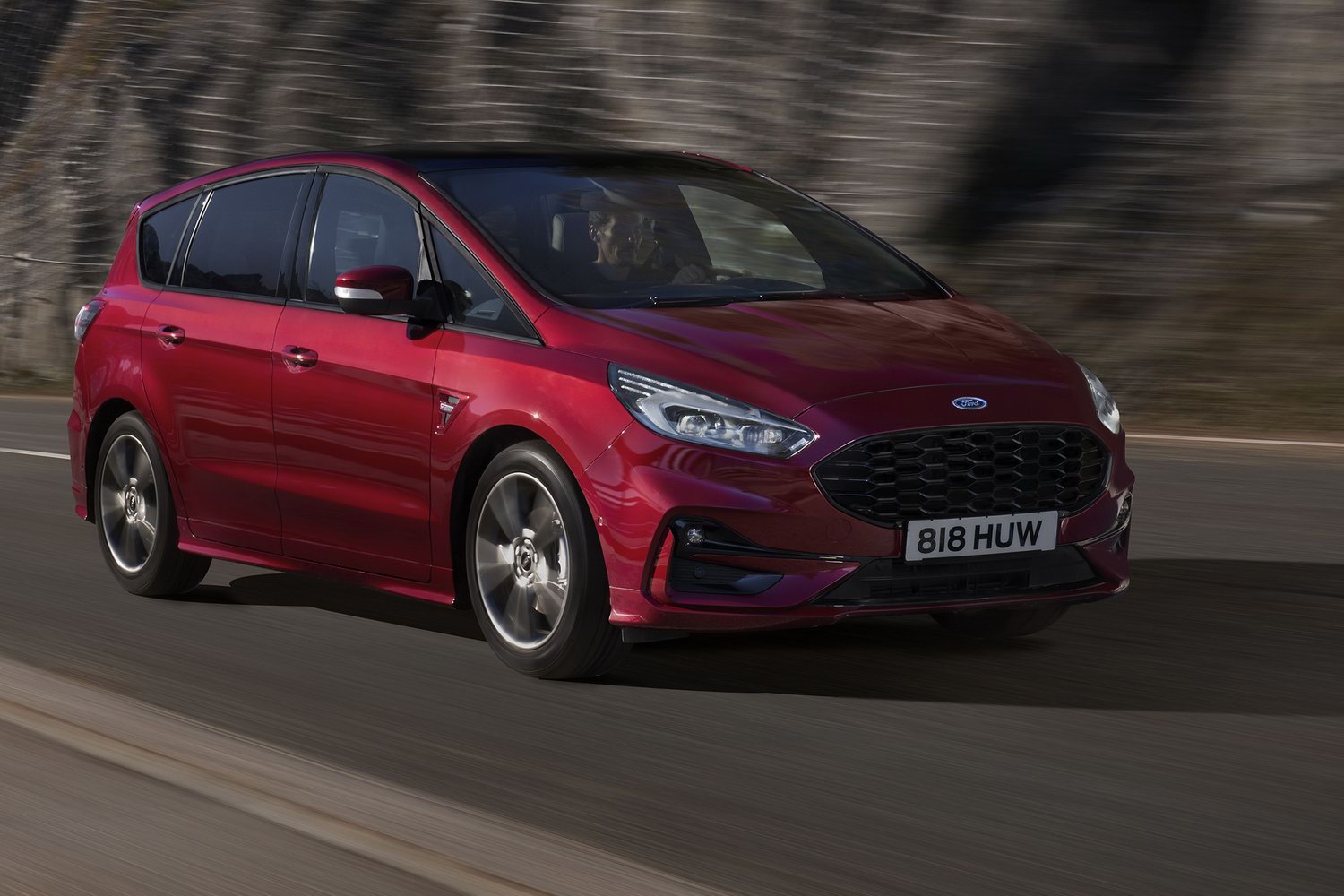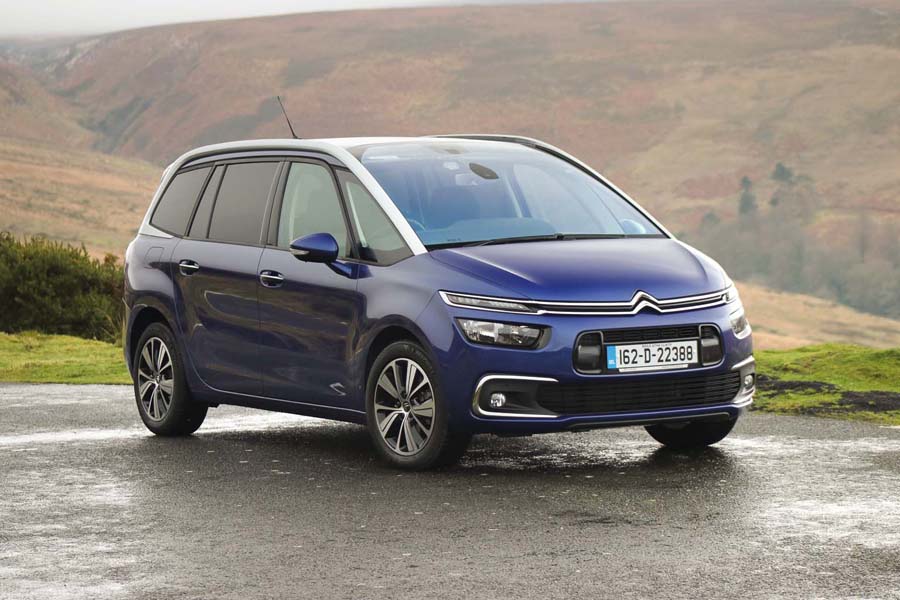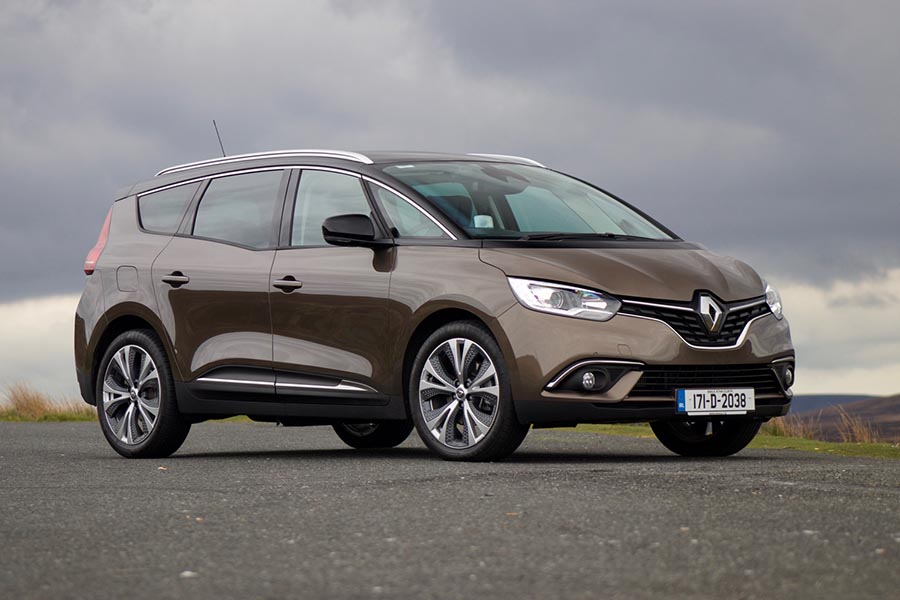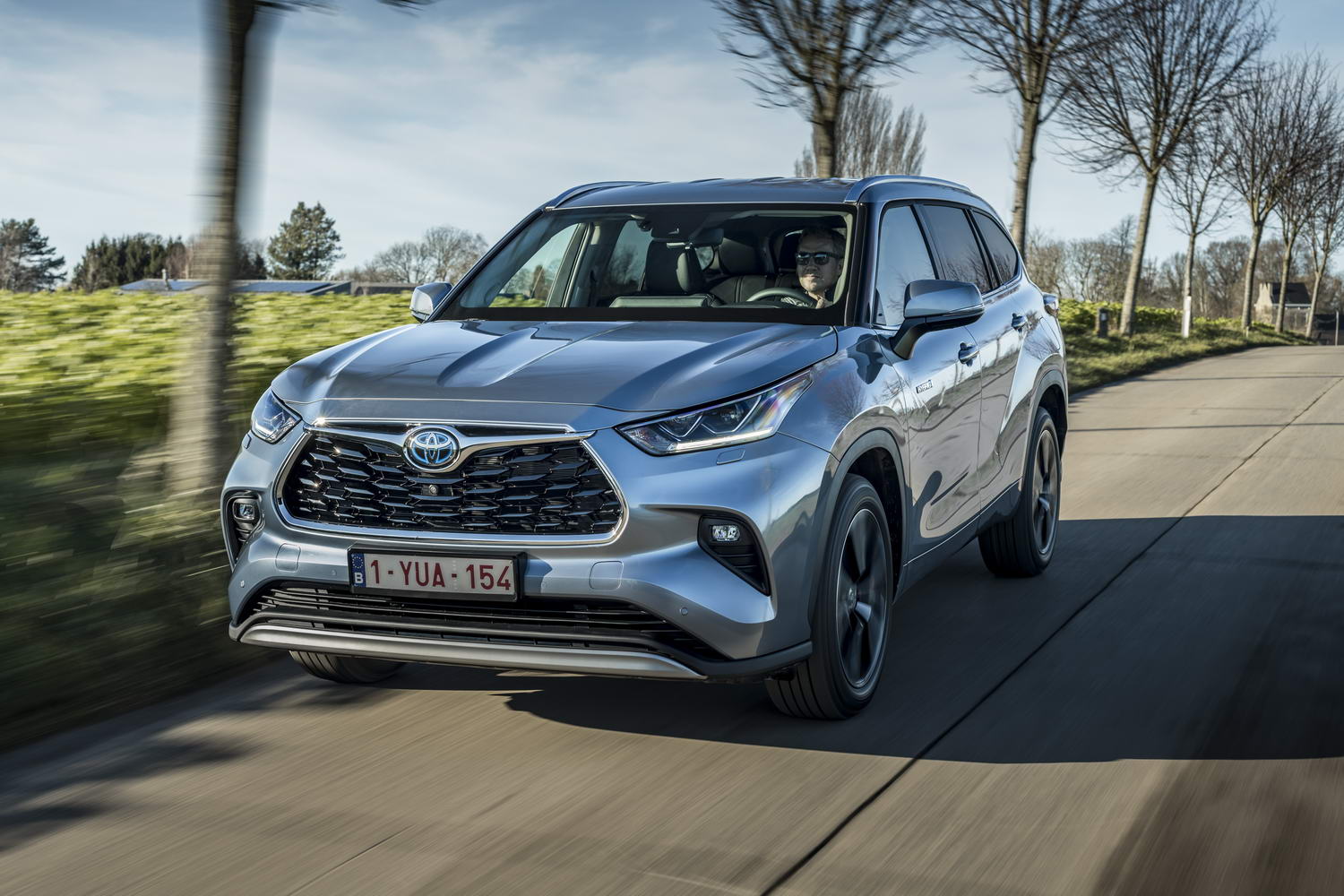Ford is persevering with the traditional MPV in the face of an SUV onslaught, and now it has added hybrid power to its S-Max seven-seat family vehicle. Is this part-electric tech good enough to keep the ageing people carrier relevant in the 2020s?
In the metal
If you don't know what a Ford S-Max looks like by now, you've presumably been living under a rock since 2015, when the second-generation version arrived. Put simply, this is your standard two-box (it's almost a 'monobox', but there's a bit too much of a kink at the base of the windscreen when viewed in profile for us to be able to say it's the latter shape) MPV - it's a tad less 'van-esque' than the larger Galaxy model but, since the first-gen S-Max arrived way back in 2006, its form has been becoming progressively less 'racy' (and we use that term in its widest possible sense in connection with sensible family motoring like this) over the intervening years.
Furthermore, because this is not a plug-in hybrid, the part-electric S-Max's one signifier as to its eco-credentials is a tiny 'Hybrid' badge in the bottom corner of its rear hatch.
So the S-Max looks OK, nothing more, on the outside and then, within, it's really starting to show its age. The Ford remains a clever use of interior space, with good packaging of its three rows of every-which-way-adjustable seats and the ability to still claim 285 litres of boot capacity with a full complement of humans on board.
But despite the inclusion of SYNC infotainment, the S-Max's fascia looks positively ancient, what with that big expanse of plastic on the centre stack and the old Ford Sony media unit in the middle of it all.
Similarly, there's nothing very hybrid-specific about the finishing within, apart from an 'L' setting on the rotary-dial gear selector to ramp up the regenerative braking effect of the S-Max hybrid.
Driving it
Ford calls this the 'FHEV' officially, which stands for 'Full Hybrid Electric Vehicle'. That means it's not a mere 48-volt mild-hybrid machine, but nor is it one with plug-in capabilities and the compulsion to drive in electric power alone for any great length of time.
Naturally, at very low-speed manoeuvring pace and when coasting, the Ford does switch its 2.5-litre four-cylinder petrol engine off and instead moves around on its electric propulsion motor. Yet a 1.1kWh lithium-ion battery pack means this zero-emissions running is a notably limited affair.
Naturally, it does cut the MPV's fuel consumption and CO2 figures to a degree, although not to any levels that are going to make people's eyes pop out on stalks in sheer incredulity at its frugality - 147g/km of CO2 and 44.1mpg (6.4 litres/100km) are hardly ground-breaking stats these days.
Of course, what it theoretically does offer is diesel-like parsimony without actually having to have a diesel engine, so it will find plenty of eager punters here in Ireland, where we're going through a gradual shift away from diesel.
Ford pairs this petrol-electric set-up to a Continuously Variable Transmission (CVT), the bane of the fledgling electric vehicles' world. So many manufacturers love this straightforward, mechanically bulletproof system for hybrids and electrics, due to the supposed economy benefits it brings by keeping the engine in its optimum operating zone for more of the time, but we generally don't like CVTs because they also normally bring severe refinement compromises, as well as unusual acceleration characteristics.
Granted, there have been a few CVTs lately that have bucked these unwanted trends, but sadly the unit in the S-Max FHEV is not one of those outliers. Instead, you get lots of 'rubber-band' sensations, where it takes an age for the Ford to respond to heavy throttle inputs - in both directions. What we mean by this is that it doesn't surge forward immediately when you plant your right foot downwards, and then conversely when you've got it up and running with some serious momentum and you lift off the accelerator, the MPV rumbles onwards alarmingly as if the throttle has jammed open for a second or so, before it finally begins to coast and decelerate again.
The irksome CVT is a big part of why the S-Max FHEV doesn't feel anything like as fast as 190hp might have you think it would be, although the 9.8-second 0-100km/h time and the meagre 200Nm peak torque output are also culpable for its sluggard nature.
Indeed, that the S-Max sounds loud and raucous when you try and elicit any meaningful pace from the drivetrain rather makes you less willing to venture deep into the throttle pedal, which makes the Ford's progress all the more leisurely. This is not an MPV you'll want to rush around in.
Shame, because - like any S-Max - it has a fabulous chassis for this class of car. It's composed and fluid in the corners, with lovely steering to play around with, and the calibration of the brakes is pretty decent too.
And as long as you don't go beyond 3,500rpm, it's an impressively refined machine as well. It rides gracefully on its 18-inch wheels and the passenger compartment is admirably hushed at motorway speeds, so as a conveyance for seven people it's certainly got the comfort part of the deal ticked off.
It's therefore a pity the drivetrain is so underwhelming - although, to give it its due, this S-Max managed to turn in a highly commendable 49.5mpg (5.7 litres/100km) on a not-very-carefully-driven test route, so maybe its cruising economy figures aren't total pie in the sky.
What you get for your money
The FHEV isn't much more to buy than a 150hp EcoBlue turbodiesel S-Max, commanding a €2,698 premium at entry Titanium level. It is also privy to the ST-Line (from €48,822) and Vignale (from €55,502) specifications, and this sporty looking ST-Line includes luxuries such as 18-inch alloy wheels, a heated steering wheel, part-leather upholstery with electrically powered and heated sports front seats, sports suspension, privacy glass, dual-zone climate control, keyless entry and go and the eight-inch SYNC 3 infotainment system with navigation as standard, among much more.
However, a six-year-old MPV that's nearly €50,000 is hardly what you'd call great value-for-money, so that tempers our overall mark for this particular section of the S-Max FHEV's review.
Summary
Borrowing a drivetrain from the newer Ford Kuga SUV line was an obvious solution for a company looking to freshen up an MPV that is hardly in its first flush of youth. That the S-Max still has a great chassis and excellent rolling refinement, as well as a family-friendly and vast interior, makes it worth a look, especially when you factor in its useful fuel economy returns in real-world motoring.
But the FHEV feels slow, and the drivetrain can be obtrusive and uncouth at times, while it's not the cheapest vehicle in the world. However, there's enough here for people with big clans that don't really want an SUV to give the 2021 Ford S-Max hybrid due consideration as their next set of wheels.











